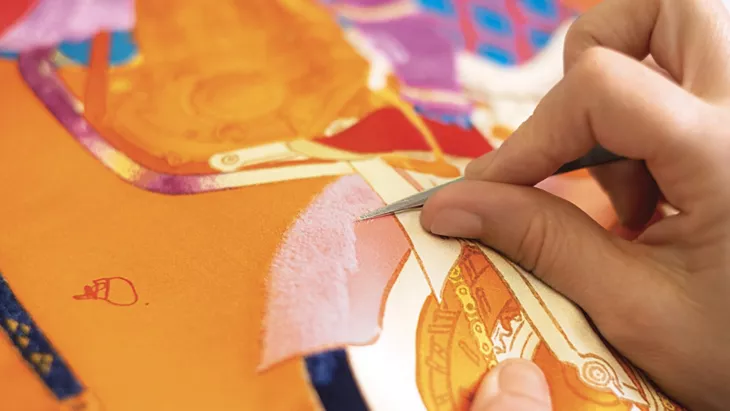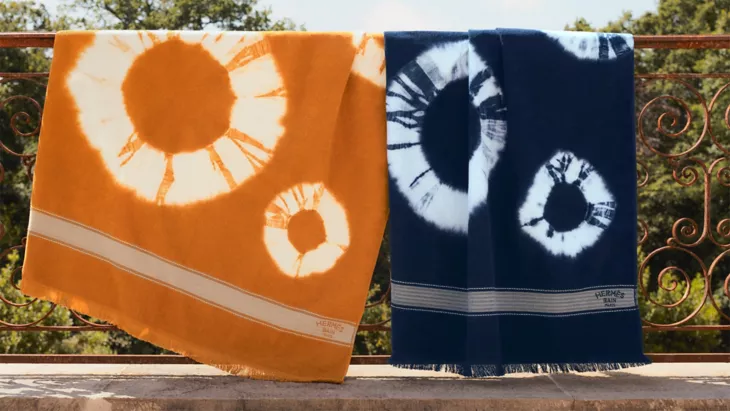1. Design
Design is the soul of the product, Hermès silk scarf pattern is complex and gorgeous, the color saturation is extremely high, it looks like each silk scarf is a beautiful painting. From 1987 onwards, Hermès will select a theme every year as the product design of the year, looking for artists who meet the temperament of the year, to provide ideas, concepts, design. And the design team (designer’s own team + Hermès silk scarf maker + accessory designer) to discuss the actual workability of the product, when the design and production are determined, the new silk scarf will be produced online in the factory in Lyon.

2. Fuel colors
At present, Hermès already has 75,000 different colors in its color library. All the colors are produced in the Hermès factory. These pigments are made of ground powder, 70% of which is water, and then these ingredients are heated. Next to the modulated pigments, at the same time, is carried out the composition of the natural gum to be modulated, which is collected from small trees in Pakistan or India, so the secret of the process when mixing the colors is to modulate these pigments in different proportions. This powder color + water creates a very natural color with a very high color saturation.
3. Raw materials
Hermès silk scarf has always used natural silk, 8 pupae of silk to weave a silk thread, while the general silk scarf with 5-6, pupae all from China and Brazil, a large square scarf will use nearly 250 pupae. This is why Hermès silk scarf than the general heavy and soft, stronger fall, knotted more three-dimensional, better look.

4. Craftsmanship
When the printing is completed, each large sheet of silk is cut to the specified size, and then after the color fixing process of washing, steaming and drying, the hand craftsmen begin to roll the edges of the silk scarf by hand. This step marks the completion of the silk scarf. However, the gentle manual hemming alone takes at least 30 minutes for each silk scarf: the fingers of the left hand first unroll the silk, then roll it inward, while the right hand quickly lays down the needle, sliding it in like a swimming snake, just right, but with no stitches visible.
Then there are the hand-carved stencils, which take 500 to 600 hours to carve an ordinary square scarf, but can take up to 2,200 hours for a complex pattern. The antsy, slow work is of critical importance because, inevitably, perfect stenciling depends on perfect tracing.
On average, 30 plates are needed for each silk scarf, with the maximum number reaching 40. Once the plates are made, they are sent to the AS production room (owned by Hermès) for color preparation and topography.
